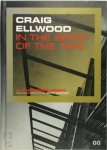Alfonso Pérez-Méndez , Craig Ellwood - Craig Ellwood
| Schrijver: | Alfonso Pérez-Méndez , Craig Ellwood |
|---|---|
| Titel: | Craig Ellwood |
| ISBN: | 9788425218033 |
| Uitgever: | Gustavo Gili |
| Bijzonderheden: | Goed, 2002, Hardcover, 321p |
| Prijs: | € 250,00 |
| Verzendkosten: | € 4,50 (binnen Nederland) |
| Meer info: |
There has been in the last ten years an intense scholarly and popular interest in looking back at postwar American architecture, especially that of southern California. This interest -catalyzed in 1989 by the Los Angeles Museum of Contemporary Art exhibition on the Case Study Houses, one of the quintessential post-World War II housing experiments- has produced monographs on several of the major architects of postwar Los Angeles. Despite his important role in the Case Study Houses, the only comprehensive source to approach Ellwood's long career has for decades been a 1968 monograph by Esther McCoy. The reasons for this three-decade period of lack of attention include Ellwood's early and abrupt retirement from architecture and the dispersion and loss of many of his drawings and papers. More importantly, perhaps, Ellwood's cultivation of the image of a talented designer that, shored up by the design skills of his associates, was not fully sustained by all the facts, long made him a difficult figure to study. These situations deserve attention and they will be covered here. Essentially, however, this book will concentrate on the work itself. Craig Ellwood's office produced a coherent set of extraordinary buildings that, independently of the circumstances of their design, deserve to be looked at again from an historical perspective. Regarding the conceptual sources for Ellwood's production, his collaborators now appear to have been important contributors. The nature of these collaborations will be discussed here in detail. Contrary to traditional narratives that defend the role of the individual in the creative process, Ellwood's dependence on outside talent became the main strength of his office. Regarding the nature of the material included here, this book intends to complement McCoy's classic monograph, not to substitute for it. Consequently, many of the classic images already published have been avoided. Ellwood's original documents are fascinating in that they are as much an ideological product as Ellwood's buildings themselves. Our premise has been to balance Ellwood's view by including a contemporary look at the work. Hence, this book incorporates new photographs, taken by Grant Mudford between February 1998 and June 2001. Grant Mudford's point of view shares authorship here with the writer of the text. Ellwood's career was extensive, including over one hundred documented buildings. Rather than editing the work by selecting acknowledged highlights, we have chosen to present documents for as many as possible of these buildings. With this purpose in mind we have redrawn and included here 91 floor plans, all the ones that we have found from all available sources. The idea was to allow the reader to see the real pace of progression of Ellwood's career, including buildings that by insisting on earlier solutions show Ellwood's interesting in prototypical solutions. As a result, the book has a dual concept, reflected by the black or white color of its pages. White pages carry the main narrative, including buildings presented at length. Within this main narrative, all other buildings are only mentioned and located in time. Every black page is dedicated to a building not developed in the main text. They accompany the white pages chronologically, and have brief independent narratives that explain the building in question. Craig Ellwood Short biography; Craig Ellwood was born in Claredon, Texas in 1922. Ellwood worked for a construction company in Los Angeles as a cost estimator while he took night classes at the University of California at Los Angeles Extension Division. One year before completing his studies he established Craig Ellwood Associates in Los Angeles. Craig Ellwood learned about building in steel and plastic sheet before he studied architectural theory. This gave him an understanding of steel construction that his contemporaries from architectural schools rarely acquired. Ellwood's designs incorporated the use of steel and with thoughtful detailing and craftsmanship. He developed the trademark structural device of an exposed warren truss that used small members to span big distances. In the 1960s, Ellwood was highly influenced by the simple architecture of Ludwig Mies van der Rohe. However, Ellwood was closer aesthetically to the light-steel cages of Charles Eames than to the structural formalism of Mies van der Rohe.
|

De verkoper zal binnen 3 werkdagen contact met u opnemen om de koop verder af te handelen.

